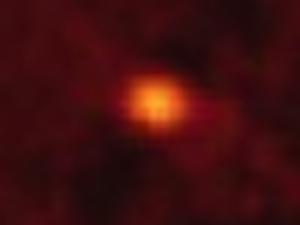Post
Zoom and Enhance
22 February 2013
 NASA/Ames/JPL-Caltech
NASA/Ames/JPL-CaltechIf you’ve ever watched American detective shows, you’re probably familiar with the infamous “zoom and enhance” trick. A piece of video, usually a surveillance camera has recorded a critical moment of a crime. Our TV detectives use some clever computer trickery, and are able to read the name tag of the assailant reflected in the victim’s eyes. Of course this is impossible because that kind of resolution doesn’t exist in a simple security camera. Unfortunately a similar type of zoom and enhance exists in the world of astrophysics. In this case it is the zoom and enhance of the artist’s concept, and it’s a personal peeve of mine.
As a case in point, this week the Kepler project announced the discovery of the smallest extra-solar planet ever discovered, slightly smaller than our moon. This is an awesome piece of work, but the popular press has chosen to lead this story with the first image below. The graceful image of the moon, Mercury, Earth and Mars are nestled between equally graceful images of the Kepler 37 planets. The smaller Kepler worlds are barren and rocky, but Kepler 37d is a blue, watery world with white clouds and perhaps even a subtle hint of green. How amazing that scientists are able to so clearly resolve planets! Except the Kepler team didn’t image these new planets at all. They know they exist, and they have a good idea of their size, but they don’t know what they look like. The images of these Kepler planets is speculation.
 NAOJ / Subaru / J. Carson (College of Charleston) / T. Currie (University Toronto)
NAOJ / Subaru / J. Carson (College of Charleston) / T. Currie (University Toronto)We actually have resolved direct images of a handful of extra-solar planets. The second image here is a direct image of a very young planet known as Kappa Andromedae b, seen as a false-color image of near-infrared. This particular planet is about 12 times more massive than Jupiter, so massive it is just a bit shy of being a brown dwarf star. While it is amazing that we can directly image a planet 170 light years away, it is hardly a high-resolution image. Of course we can always have an artist zoom and enhance to show it as a Jovian giant in all its glory.
Images such as the first one are lovely, and they do help draw readers to the page, but it is important to keep in mind that such images are entertainment, not science.